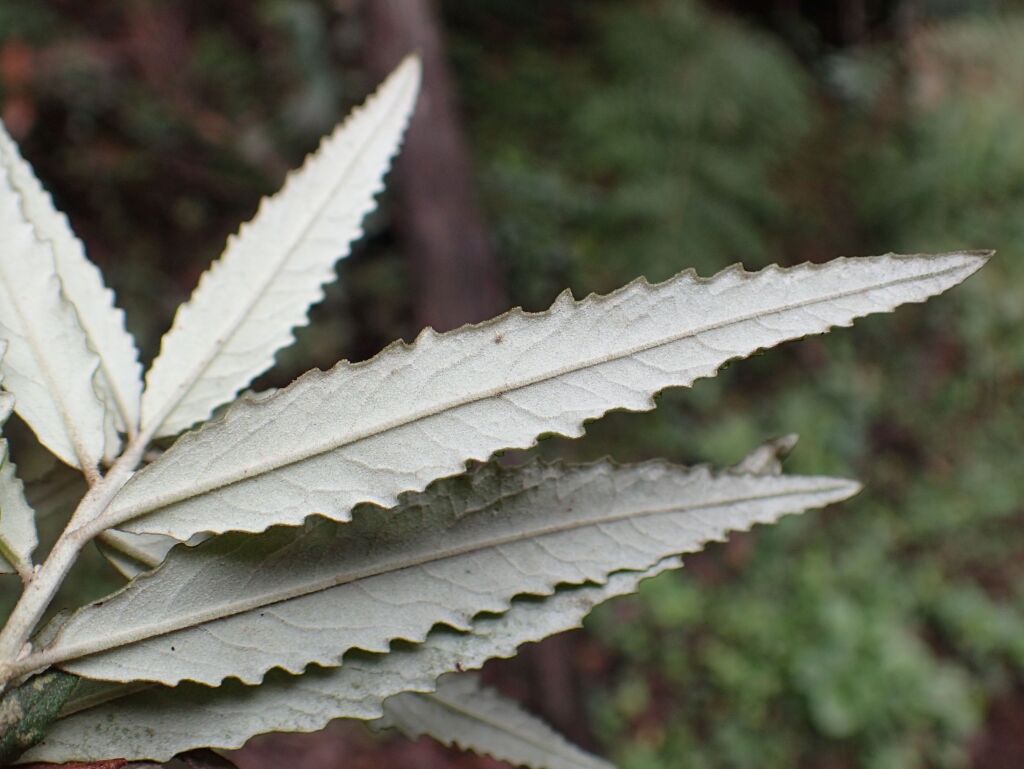Olearia phlogopappa subsp. continentalis
MessinaBushy shrub to 2.5 m high. Leaves lanceolate, narrow-ovate or ovate, 31–70(–120) mm long, 7–17 mm wide; margins subentire or irregularly crenate or serrate; upper surface green or pale green, with mid-dense to sparse stellate hairs, usually glandular; lower surface white, cream or grey, densely stellate-hairy, with scattered sessile glands; petiole 2.5–5.5 mm long. Capitula pedunculate, in terminal or subterminal panicles or compound corymbs. Flowers Oct.–Dec.
Wim, GipP, OtP, WaP, CVU, GGr, EGL, EGU, WPro, HSF, HNF, OtR, Strz, MonT, HFE, VAlp. Also NSW. Common and widespread in moist to wet forest in eastern Victoria.
Closely related to O. lirata, generally found at higher altitudes than that species where they co-occur (see note under O. lirata). At the upper limit of its altitudinal range, O. phlogopappa subsp. continentials can be difficult to distinguish from subspecies flavescens (see note under that subspecies).
 Spinning
Spinning
